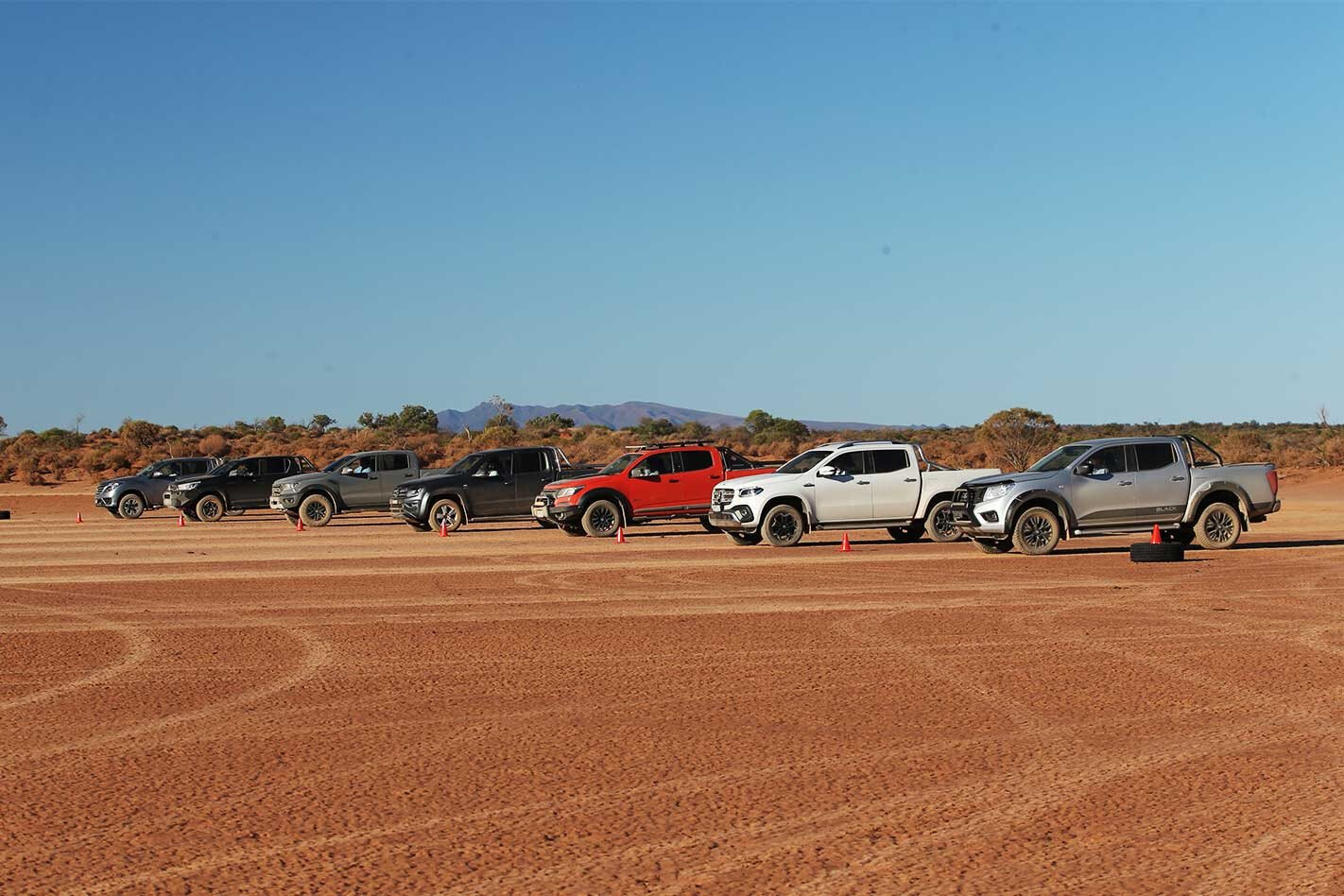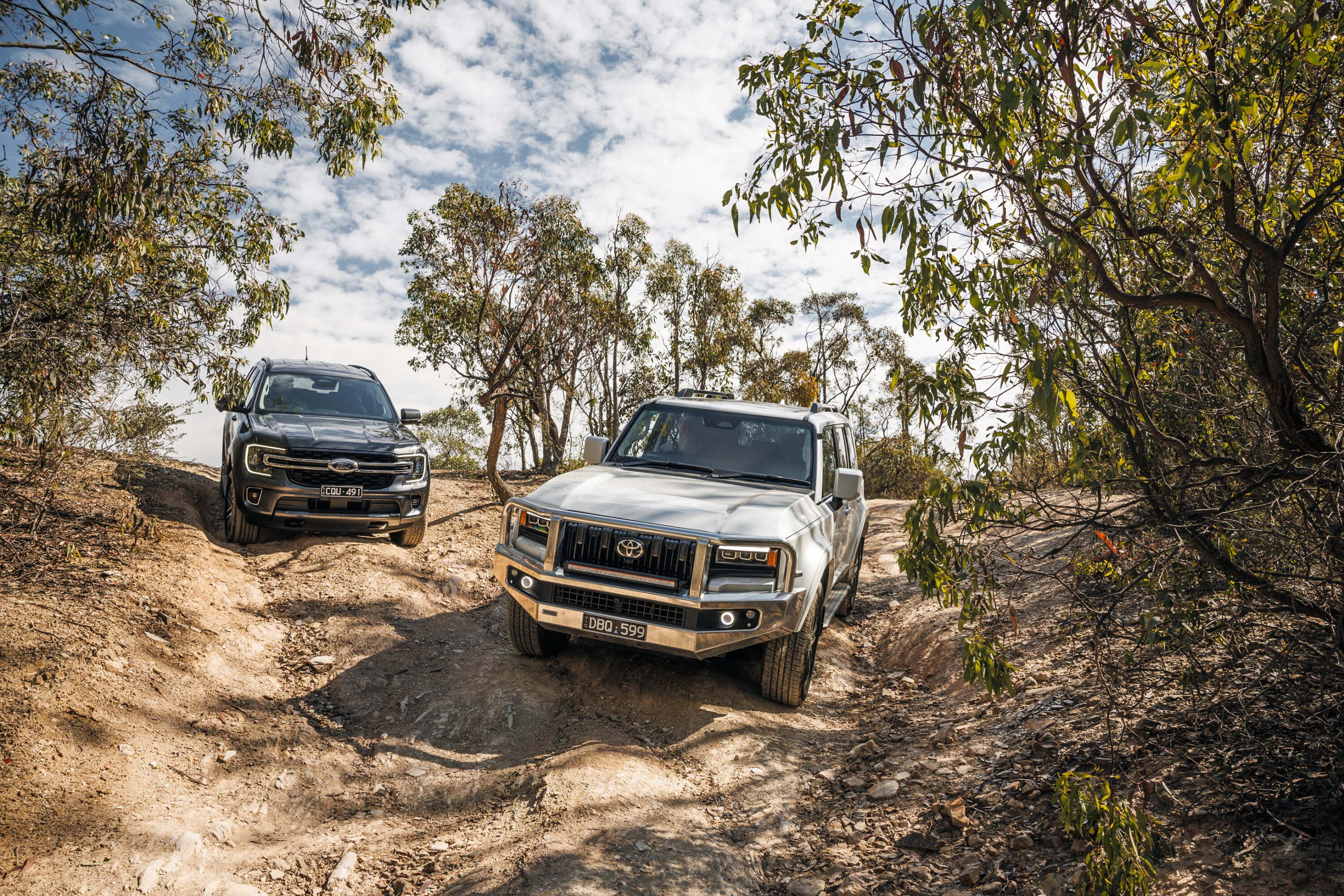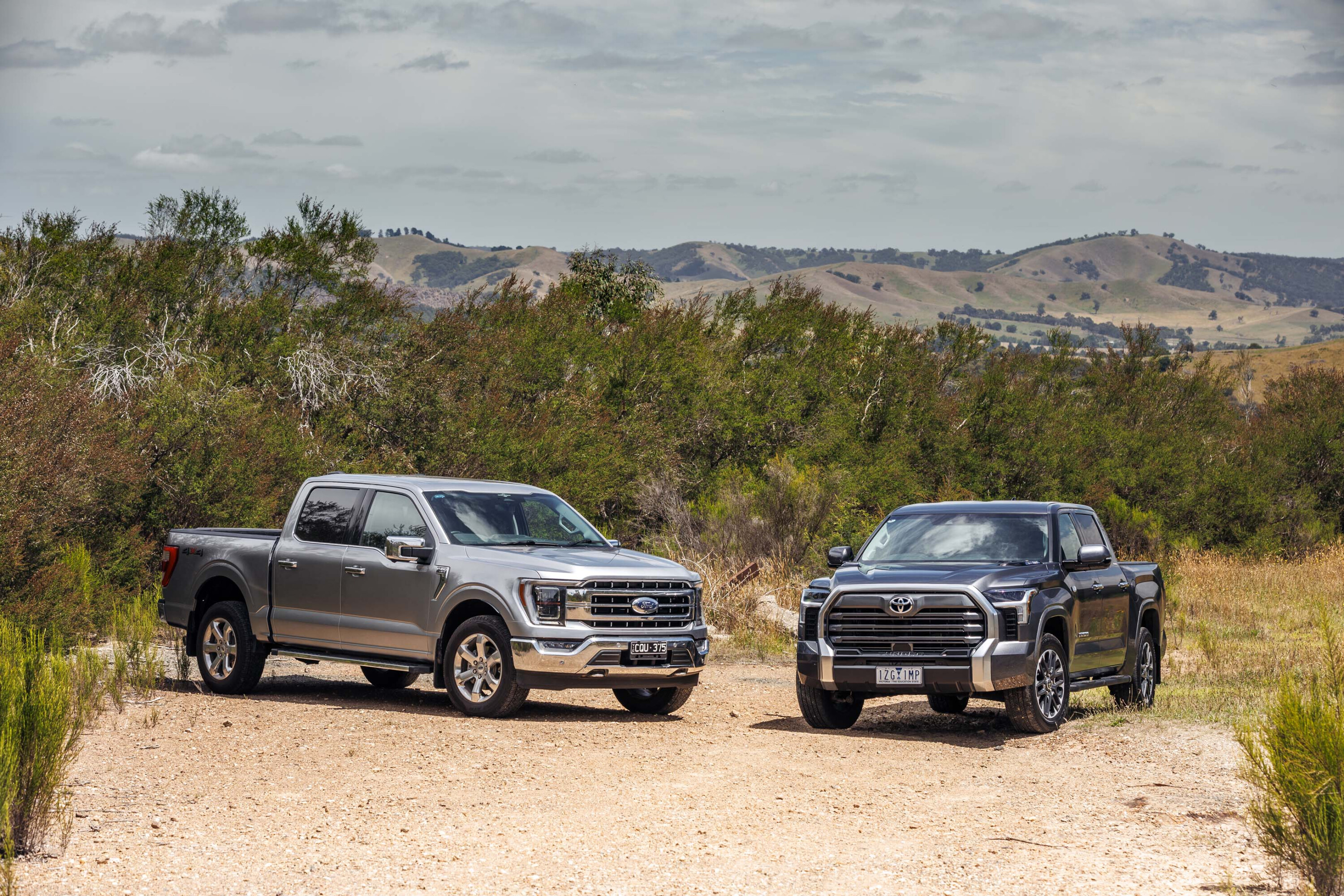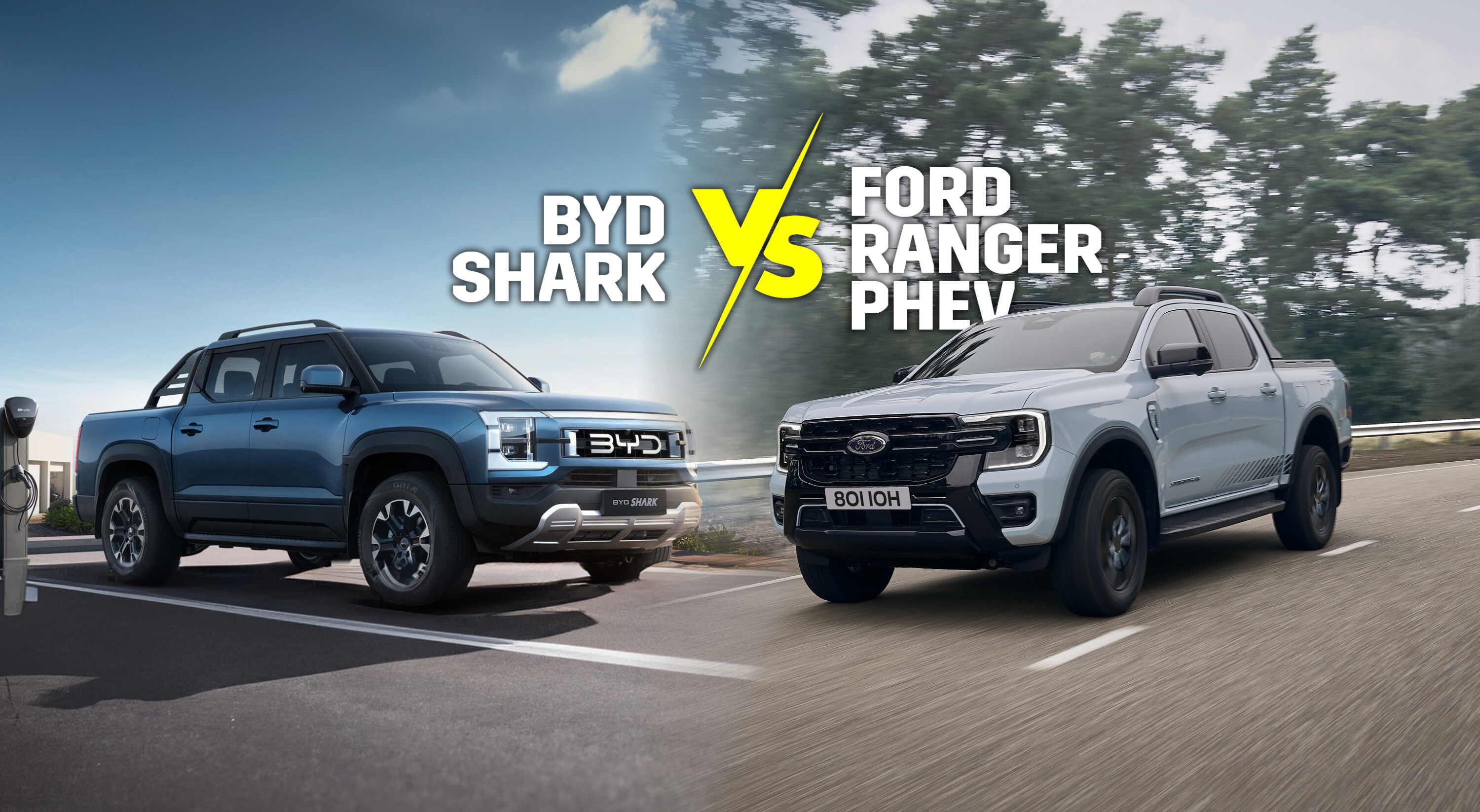HERE at 4X4 Australia we spend a lot of time punishing four-wheel drives across the toughest terrain, in turn evaluating wheel articulation, traction systems and ground clearance. It is, after all, the core of machines designed for adventure and to perform flawlessly in the rough stuff.
However, for a bit of fun we’ve changed our focus for a one-off high-speed indulgence. For this test we’ve focused on a single attribute of the latest breed of dual-cab utes: performance.
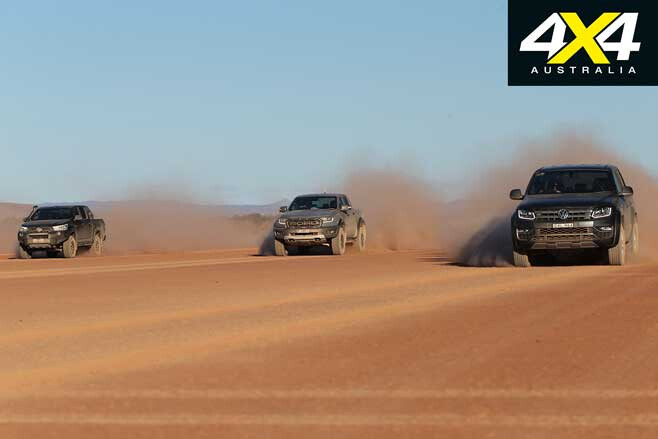
Not around a race track or scorching over a lumpy track Baja style, but in a straight line. A flat-out thrash from a standstill across a double quarter-mile. Think effortless outback touring, overtaking that road train or simply wanting to build pace before the next Simpson sand dune.
Rather than a regular drag strip we’ve thrown in an outback twist, performing testing on a 1.2km expanse of claypan that is as smooth as they come. It’s on a private station and is a long way from your average performance testing patch; parched earth setting the foundation for a dusty top-speed experience.
With the temperature north of 40°C it is about as harsh as Aussie conditions get, with the occasional willy-willy snaking across the course to add to the Aussie ambience. Our drag race took part over a defined 800m strip, the extra few hundred metres a comfortable safety margin to slow cars travelling in excess of 150km/h.
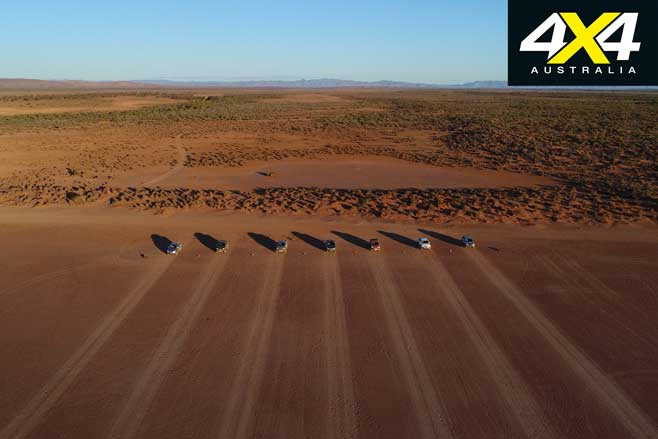
It’s all over in 30-something seconds, an orange sand dune rushing towards us as the claypan disappears beneath pounding all-terrains at a rate of 45 metres every second. We’re covering almost the length of an Olympic swimming pool every second … in a dual-cab ute that can comfortably cope with everything from soft sand and mud to craggy rocks and river boulders.
With mountain ranges towering in the distance and heat haze shimmering off the bronzed surface, there’s a remote sense of anticipation as our seven utes line up for the ultimate outback drag race.
Testing Times
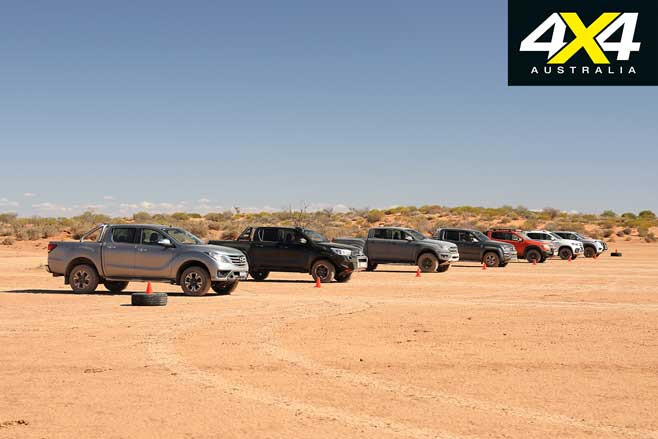
To even things up between the full-time four-wheel drives – the Amarok and X350d – all vehicles ran in 4×4.
There was no loading the transmissions against the brakes to boost turbo pressure. Instead it was straight on to the throttle, mashed to the firewall; flat out and hold it. We left the transmissions to do the shifting rather than trying to outsmart the computers ourselves. The temperature was hovering around 44°C, so cooling systems were working hard and air-conditioning systems even harder.
Acceleration times and speeds were collected using a VBox data logger, the same as those used in some race cars and for trackdays. Being on dirt, which creates more rolling resistance than bitumen, the times are slower than what you’d achieve on a paved road. Yet comparisons still apply.
So, let the flat-out 4×4 games begin…
1st: Volkswagen Amarok V6 580
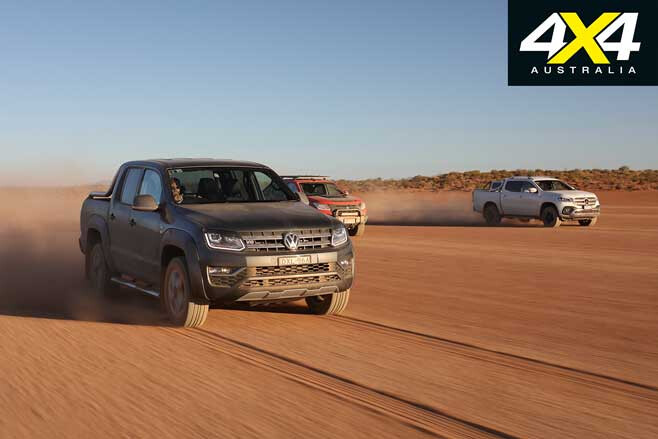
As the most powerful engine in the Amarok line-up, the V6 comes with big expectations. The version we’ve got is the 580, the number referring to its torque peak that edges it up over the regular V6 and gives it more pulling power than any of our seven.
There’s also an overboost function that liberates another 10-15kW; although, it relies on intake temperatures being less than 55°C, something that is highly unlikely in the 40-something-degree conditions we’re dealing with out here. If anything, then, the times we clocked are quite conservative for the Amarok.
Not that it slowed the Volkswagen. It was the only contender to top 100km/h in less than nine seconds.
Credit its enthusiasm to its relatively quick response to the initial prod of the throttle as well as closely spaced ratios, especially below 80km/h; the focus of the gearing seems to be to maximise acceleration in lower gears, and is something that clearly works. The eight-speed auto keeps the engine ticking over nicely.
Into triple figures some of the muscle dissipates and the Amarok starts seeing the X-Class approaching in its rear-vision mirrors, with the mighty Mercedes-Benz slowly reeling it in. But the Amarok enjoys a clear-sky view, its dust trail billowing out each side and cascading over its mid-pack rivals, almost as if thumbing its 30Nm advantage in an act of four-wheeled defiance.
While the Amarok and X-Class engines are closely matched on paper, they’re different beasts in the real world, with the Volkswagen’s lower-speed focus and superior step-off better matched to Australian conditions.
SPECS: VOLKSWAGEN AMAROK V6 580 Engine: 3.0-litre V6 twin-turbo diesel Power: 190kW at 3250rpm Torque: 580Nm at 1250-3250rpm Transmission: 8-speed auto
2nd: Mercedes-Benz X350d
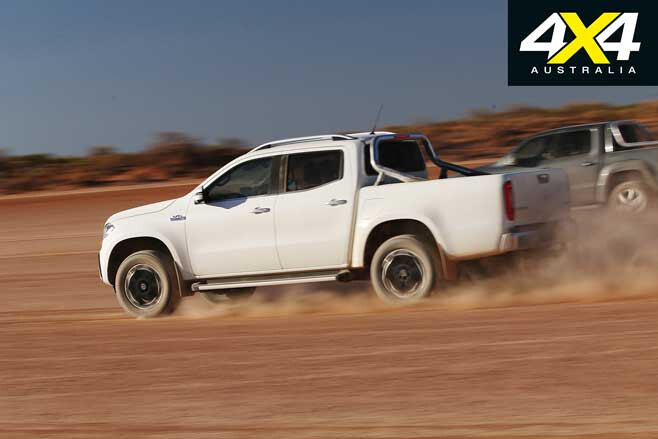
Same power, less torque and the X350d is also a ratio down in its gearbox compared with the VW. But it’s the way it steps off the line that hurts the top-shelf X-Class down the entire length of the claypan.
Lazy throttle response teams with turbo lag to make for a lethargic start, and there’s a big hesitation as it waits for the turbo to awaken. Around town the X350d needs planning to deal with that initial lethargy; our here it shows up in the acceleration times, taking a full four-tenths of a second longer than the Amarok (that’s 10 per cent longer) to reach 60km/h.
Once it does it jumps the hardest of the lot, its transmission and grunty engine making light work of nearly 2.2 tonnes. So much so that breaking out the middle acceleration runs the Merc is the quickest of our seven. Just 6.09 seconds from 80-120km/h reinforces this is the ute you want for blasting past a road train.
As the speedo winds past 150km/h the Mercedes starts carving back its shortfall, building speed more effectively than the Amarok. It’s almost as though some German engineer has decided that while it needs to cart a container load of hay and tow a caravan that would suit the Kardashians it still needs to hold its own on an autobahn. The engine revs cleanly and the gearing works well at speed.
Like a Melbourne Cup winner it comes in hard in the final half of the course, its speedo nudging past 160km/h. In terms of sheer top speed it’s the fastest here, comfortably. But the Merc already lost so much ground in the early part of the run it spends the rest of the claypan chasing the lead, and it effectively loses the race in the first 20 metres.
It crosses the 800m finish line in second, albeit only three-tenths behind the Amarok. But with an extra 8km/h on board it has the credentials. If the race had been one-kilometre long the Merc would have come home first.
SPECS: MERCEDES-BENZ X350D Engine: 3.0-litre V6 turbo diesel Power: 190kW at 3400rpm Torque: 550Nm at 1400-3200rpm Transmission: 7-speed auto
3rd: Holden Colorado Z71 Xtreme
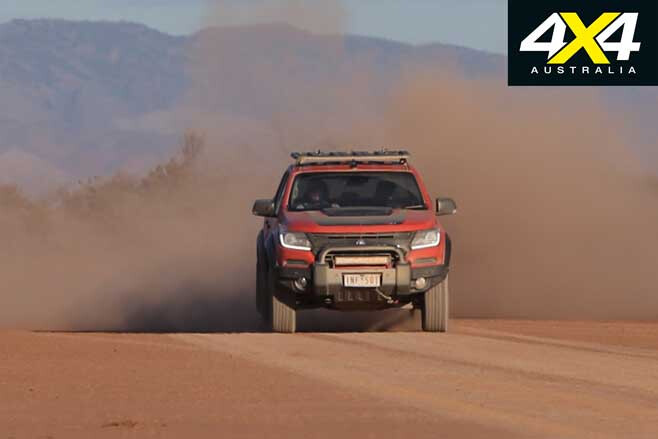
Holden HAS always talked up the grunt of the Colorado’s 2.8-litre engine. When it debuted in 2012 the four-cylinder turbo-diesel brought with it a mighty swell of torque, and even today the Holden outclasses some impressive contenders. The 147kW power peak is less impressive, but still in the mix by ute standards.
It’s the tuning and preparedness to jump that defines the Colorado and the way it behaves in our drag race. Refinement and polish play second fiddle in an engine that’s simple but effective. So much of that torque is available so soon after flooring the throttle. The Colorado’s torquey 2.8 jumps decisively and pulls an early lead on all but the bigger V6s.
Crucially, it’s comfortably ahead of the tech-laden Ford, some old-school grunt doing the job. Most of the Raptor’s deficit to the Holden happens in the first few car lengths, the margin blowing out to almost one full second by the time they top 100km/h.
But fewer ratios hurts the Holden, the engine forced to lean on that torque spread rather than jump into another gear. From then on it’s bumper to bumper with the Ford, the Holden’s lack of top-end not helping. Once moving, the two are very closely matched. Yet in this Ford versus Holden battle it’s the lion that comes out on top.
Of course, once all those other ute attributes are factored in it’s a different story; although, for our claypan drag strip it’s a solid win to Team Red.
SPECS: HOLDEN COLORADO Z71 XTREME Engine: 2.8-litre 4-cyl turbo-diesel Power: 147kW at 3600rpm Torque: 500Nm at 2000rpm Transmission: 6-speed auto
4th: Ford Ranger Raptor
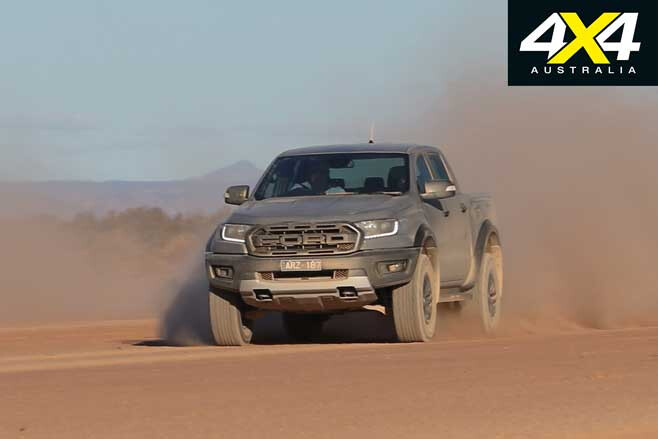
The Ranger Raptor may be the toughest, meanest ute on our dusty start line, but it’s got the smallest engine by at least 10 per cent. Not that the numbers suggest anything is lacking, with 157kW and 500Nm on offer. The Raptor also has a sequential turbo set-up and more ratios than the others, with a full 10 on offer.
Ever since Ford announced the Raptor would use the newer 2.0-litre twin-turbo four-cylinder instead of the trusty 3.2-litre five-pot, debate has raged about which is best. This one settles the score, and it’s a clear win in the 2.0’s favour; the Mazda BT-50 allowing a direct comparison because it shares that 3.2 still employed in other iterations of the Ranger.
But it’s not a slam dunk.
The Raptor is one of the more sluggish of our contenders off the line, the engine taking a moment to get into its stride. It also has a semi hiccup in first gear and won’t use its full rev range, instead slotting into second for the torque ascent. That scenario was not a one-off, either; it was consistent on repeat runs.
Up to 60km/h it’s only half a second up on the Mazda – and the Colorado is already beginning to show the Ford its trails of dust. Once moving it’s the transmission that comes to the fore, the 10-speed slicing through the gears beautifully and keeping the engine in its sweet spot. When under way it utilises every one of those ratios nicely and the engine is impressively refined for a diesel in a tough ute like the Ranger Raptor.
From the Raptor’s viewpoint there’s no slowing the V6s, the dust trail intensifying and disappearing into a sun-bleached distance, with the cloud eventually spewing over the bonnet to the point where you struggle to see the extremities of the car.
SPECS: FORD RANGER RAPTOR Engine: 2.0-litre 4-cyl sequential twin-turbo-diesel Power: 157kW at 3750rpm Torque: 500Nm at 1750-2000rpm Transmission: 10-speed auto
5th: Nissan Navara Black Edition
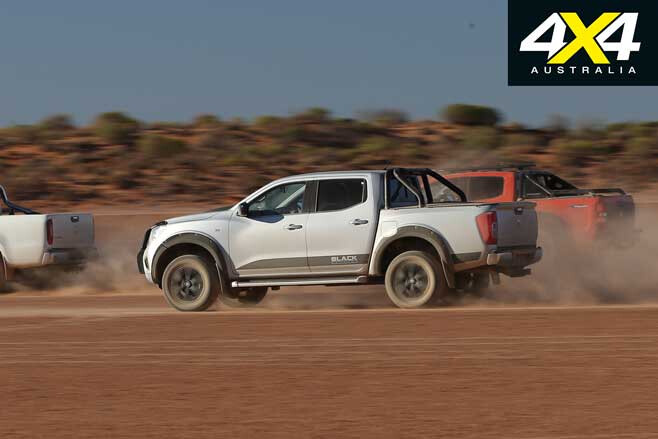
WITH 2.3 litres of capacity the Navara’s four-cylinder is the second smallest here, one thing that helps it be the most fuel efficient. Our Navara is a Black Edition, very similar to the recently-released N-Trek, complete with wheel-arch flares, decals and some additional equipment.
That it’s not the slowest is testament to the engineering efforts, which demonstrate what lighter weight and well-tuned turbos can do. The Nissan has a clever sequential turbo set-up, with one smaller than the other so that it spins up faster, reducing lag. That comes into its own on the strip, where quick responses make the most of a modest 450Nm torque peak.
The engine spins relatively freely by diesel-ute standards, ensuring it makes reasonable time. That top-end helps the Navara reel in the BT-50, but the Ford and Holden are beyond its reach.
SPECS: NISSAN NAVARA BLACK EDITION Engine: 2.3-litre 4-cyl sequential twin-turbo-diesel Power: 140kW at 3750rpm Torque: 450Nm at 1500-2500rpm Transmission: 6-speed auto
6th: Mazda BT-50
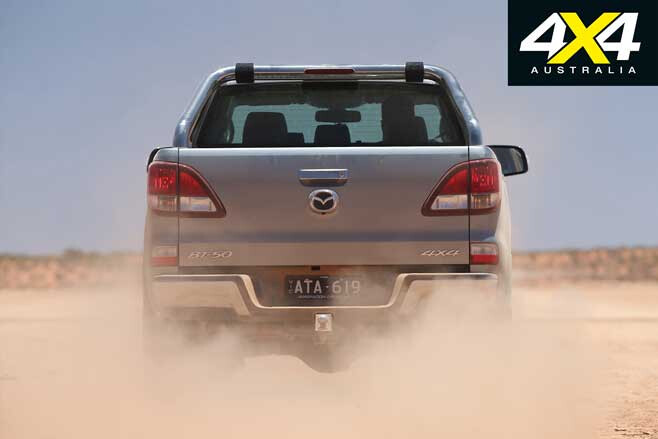
At 3.2 litres the BT-50 has the largest capacity engine in our field. Its five-cylinder layout is also unique, slotting between the fours and sixes that sprawl across the claypan. Not that the BT-50 has ever felt undernourished in everyday driving – gruff and noisy, yes, but not slow.
Its throttle tuning and response give it an initial kick off the line. The BT-50 launches respectably, something that would be useful for the traffic-light grand prix. It’s enough to give it an early lead against the Navara, the 470Nm making itself known. But it runs out of puff as speed increases, the Navara carving its way past by the time they’ve passed 100km/h.
While early acceleration is respectable, the 80-120km/h run is only completed a fraction of a second faster than the Hilux. Higher speed is not the BT-50’s strength, at least when it comes to building speed.
Any hope of holding onto the Raptor’s tail also dissipates the further we barrel down the claypan.
Considering regular versions of the Ranger still offer this same 3.2 engine, it’s a clear demonstration that technology wins out over cubic capacity – in this instance, at least.
SPECS: MAZDA BT-50 Engine: 3.2-litre five-cylinder turbo-diesel Power: 147kW at 3000rpm Torque: 470Nm at 1750-2500rpm Transmission: 6-speed auto
7th: Toyota Hilux Rugged X
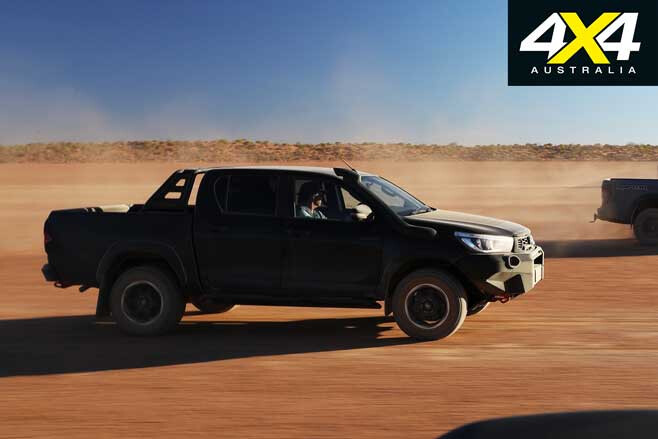
Even when it first arrived the 130kW and 450Nm dished up in the latest Hilux was nothing special compared with its rivals. By sheer numbers, the Hilux is outclassed. And while numbers aren’t always everything, this time around it turns out they count for plenty.
The Hilux is slow to take off and maintains that lethargy throughout its run. It’s swallowing more dust than any rivals, the fine particles splaying over its accessorised Rugged X body. That’s not ideal given the issues this 2.8-litre has with the air filter allowing dust to reach the mass airflow sensor, in turn reducing outputs (we didn’t have any issues during our testing).
The leisurely stroll to 100km/h takes almost twice as long as the Amarok 580. It’s not helped with the Rugged X pack we’re testing, which adds a couple of hundred kilos to the total.
But it’s not just in initial acceleration where the Hilux takes its time. Even in the 80-120km/h range the Hilux was the most relaxed, taking almost twice as long as the Mercedes to add 40km/h to its speed. Passing trucks on outback roads takes more planning in a Hilux.
Perhaps Toyota’s drawcard is longevity. There’s every chance the Hilux engine is very understressed, the focus on ensuring many decades of reliability. Sure, it’s speculation, but decades of Hiluxes suggest there could be some truth there.
SPECS: TOYOTA HILUX RUGGED X Engine: 2.8-litre 4-cyl turbo-diesel Power: 130kW at 3400rpm Torque: 450Nm at 1600-2400rpm Transmission: 6-speed auto
Winners & Losers: The Breakdown
Another Technique
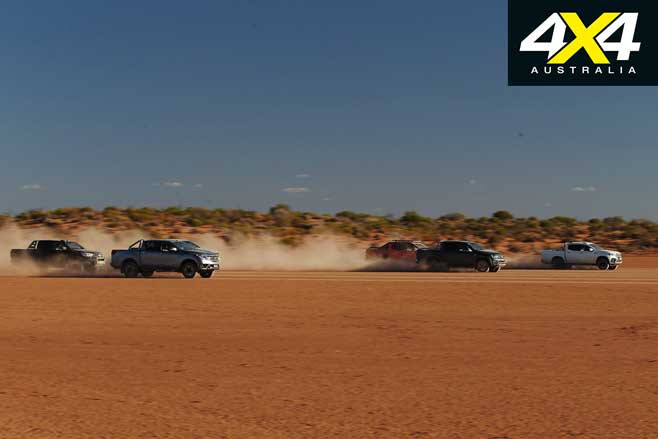
THE FIGURES quoted here didn’t rely on loading up the transmission before taking off by holding a foot on the brake, something that allows the turbo to build boost and launch harder.
However, by means of comparison, we also took times for each car to see how much of a difference this approach made … and the overall results didn’t change markedly.
However, taking some of the Benz’s lazy initial lag out of the equation closes the gap up to 100km/h, and by the end of the 800m strip the X350d had just edged past the Amarok – beating it across the line by a mere 0.03 seconds.
Weighty Issues
THE SAME engine in different variants of some of our contenders would likely perform better, all because we’ve chosen top-shelf model variants. With the Hilux, for example, the Rugged X adds more than 200kg as well as the aerodynamic drag of a snorkel; the latter not much of an issue at low speeds, but certainly a hindrance above 100km/h.
Same story with the Ranger Raptor; it’s around 200kg heavier than a regular Ranger ute and, with bigger all terrain tyres and taller ride height than standard, it’s pushing more air. A Ranger XLT or similar with the same drivetrain would have fared better.
Similarly, the Colorado Z71 Xtreme is far from slippery through the air, its roof tray humming away as speeds increase, in turn sucking crucial kay-per-hour off the speed. Plus it’s 150kg heavier than a non-accessorised Colorado.
It’s unlikely to have affected the finishing order, but the times and speeds recorded would in some instances be better had the cars not been dripping in accessories.

